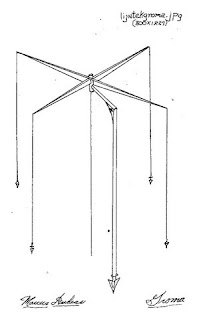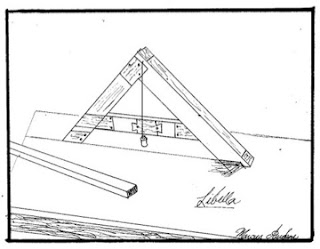Thursday, May 31, 2018
Liechtenstein Castle
Liechtenstein Castle.
The Castle Of Liechtenstein
The Castle Of Liechtenstein
Ancestral castle of the princes of Liechtenstein
Hugo of Liechtenstein built the castle between 1130 and 1135, which came to be in possession of the Stadeck family by 1295, by use of a marriage contract.
The castle often changed hands between different royal families like the Dukes of Cilli and King Matthias Corvinius which granted Jan (Hans) Holuberzi the upkeep. The houses of Khevenhiller and Aichelberg owned the castle since 1592 including Prince Johann Josef the 1st of Liechtenstein, who acquired the castle from Prince Poniantovsky and returned the ownership of the houses of Liechtenstein in 1807, which is still current.
Monument of Romanic architecture
Major parts of the Romanic castle, originating from the first building phase circa 1130/1135, are still surviving and able to be visited. With this Romanic settlement, the castle today counts as one of the rare Romanic surviving secular buildings of the 12th century in Europe.
From 1508 to 1588 the castle was occupied by the Tyrolian house of Freisleben. In 1529 the castle was initially destroyed by the Osmanians and was rebuilt from 1533 – this leads to the loss and sale of the ownership of the castle in 1567.
The castle and ownership came into the possession of the Duke of Khevenhiller between 1592 and 1664 during which the castle was extensively extended under the Duke Franz Christoph Khevenhiller, Baron of Aichelberg. In 1664 his family tree was drawn up in which the background consisted of a rendition of the castle of Liechtenstein.
Alas, the castle was once again largely destroyed by the Osmanians in 1683 which rendered the castle almost completely uninhabitable. The Gothic entrance was allotted to the use of stables, until being razed to the ground in 1809.
Chorbates (leveling Instrument)
The 'Chorobates,' described by Vitruvius in Book VII of the Architecture, was used to measure horizontal planes and was especially important in the construction of aqueducts. Similar to modern spirit levels, the 'Chorobates' consisted of a beam of wood 6 m in length held by 2 supporting legs and equipped with 2 plumb lines at each end. The legs were joined to the beam by two diagonal rods with carved notches. If the notches corresponding to the plumb lines matched on both sides, it showed that the beam was level. On top of the beam, a groove or channel was carved. If the condition was too windy for the plumb bobs to work effectively, the surveyor could pour water into the groove and measure the plane by checking the water level. Vitruvius instructs that the water level groove was to be "five feet long, one digit wide, and a digit and a half deep". By using two or more 'Chorobates,' established levelly, the vertical distance between instruments could be established by sighting along the depth of the uphill instrument, to a rod placed atop the lower 'Chorobates.'
Libella, Leveling Tool
Roman architects were skilled in this kind of leveling work, for which they used sophisticated tools. Besides the ordinary level (Libella), similar to the one used today by carpenters, they used devices such as a groma, chorobates, and dioptra.
Given the elementary means, materials en tools which were available, it is remarkable to see the precision with which the Roman aqueducts were laid out. The mean gradient of a Roman aqueduct was something between 0,15 - 0,30 %.
Additional resources
Another leveling instrument used by the Romans was the simple "Libella." It consisted of a frame in the shape of the letter A, with the addition of a horizontal bar on top (see photo). From the apex, a plumb line was suspended that coincided with a mark on the lower crossbar when the instrument was level. Other marks could have been added to indicate other slopes, but there is no evidence that this was done (Hauck, 1988:43).
Literature:
> Moreno (2004): Roman Surveying (from the Spanish Traianus website)
> M.J.T. Lewis (2001): Surveying Instruments of Greece and Rome
> M.J.T. Lewis (2001): Surveying Instruments of Greece and Rome
> O.A.W. Dilke (1971): Roman Land Surveyors
Roman military surveying, from YouTube
Thursday, May 24, 2018
Monday, May 7, 2018
Subscribe to:
Posts (Atom)







